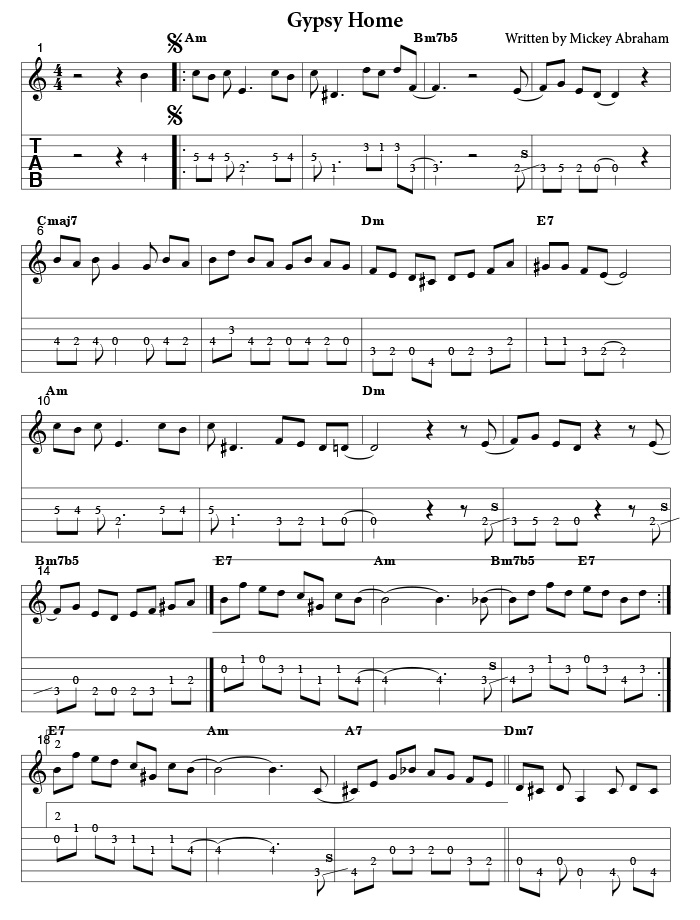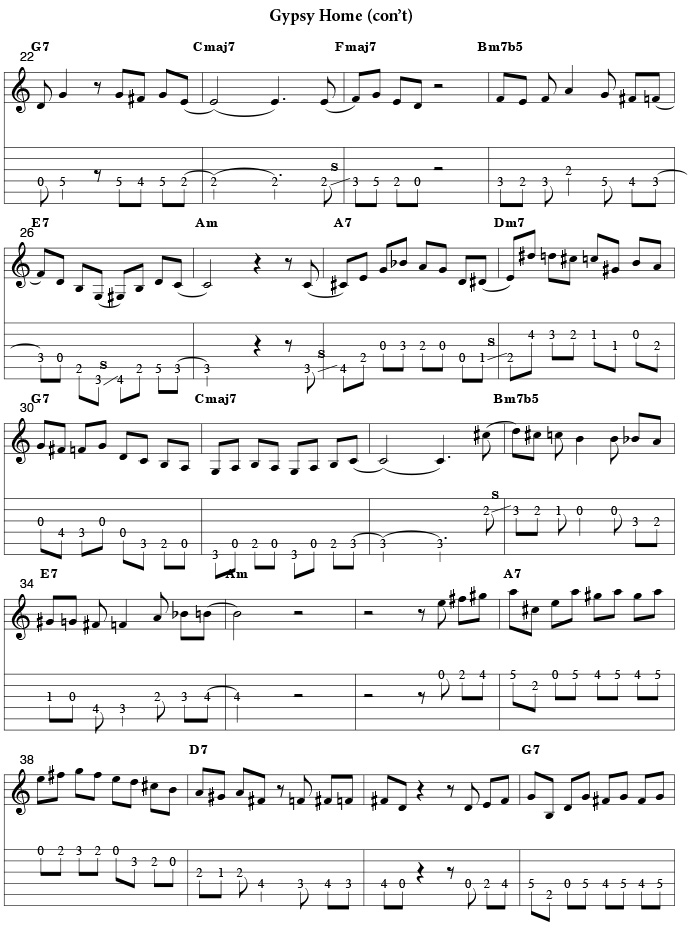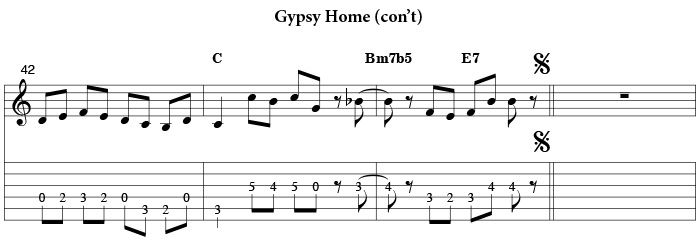|
Flatpicking Guitar Magazine
Free Monthly Lesson
February 2018
Gypsy Home
By Mickey Abraham
Download PDF | Download mp3
Hello and welcome once again to Flatpicking Guitar Magazine’s free lesson portion of our monthly newsletter. In ten years of contributing arrangements to Flatpicking Guitar Magazine I have only submitted one original tune. This was July of 2012 and the tune was “Watson Hornpipe.” Now six years later I offer you an original Gypsy flavored tune called “Gypsy Home.”
“Gypsy Home” is a three part tune primarily in the key of Am. The opening lick was inspired by my New Orleans friend and amazing Gypsy guitarist, Brett Gardner. I came up with chords by using all the chords in the key of Am …. in order! Am is the tonic chord, then Bm7b5 is the ii chord, then Cmaj7 the III, followed by Dm iv and finally E7 the V7. Don’t worry, you don’t have to know theory to hear how these chords connect.
In the B section I’m paying homage to classic chord progressions like “Autumn Leaves.” There are countless standards written to these amazing changes and I wanted to see if I could carry the A section melody through these changes. If you listen to Bach and baroque music you’ll hear this chord progression used as well. It’s basically iv, b7, III, VI, ii, V, tonic. The sound of the chords is so pleasing I can see why everyone from classical composers to jazz cats use it.
The C section shifts to a dominant seventh sound. I hear this section functioning as almost a swing “tag” to turn the song around to the top. The C section is also great for those who enjoy playing cool licks over swing changes. The chord pattern of A7, D7, G7, and C is reminiscent of so many classic tunes like “Alabama Jubilee” and “Blackberry Rag.” I look forward to what my picking friends will come up with when improvising over this section.
I find it fun to come up with original melodies. It’s very much like improvisation but I get to take my time and let the licks sink in to my ear. I try to hear where the medley might go before I play it and then craft it to fit what I’m hearing. I also get to try out new licks I’m working on and try to fit them into the melody in a way that hopefully sounds natural and not forced. One example is how the A section resolves to the 9th (B note) over the A minor chord at measure 16. I get to craft this type of tag when composing while I’d probably land on the A note if I were improvising. Another good example is measure 25 where I land on the note that is ONE FRET HIGHER than the root of the chord. I’d be very hard pressed to improvise a line like this but when I slow it down and hear where the melody is going I can actually use the b9th and diminished scale ideas in a way that sounds melodic and not just thrown in to use the diminished scale because you know it works over a dominant seventh chord.
I hope you enjoy working on “Gypsy Home.” If you learn it please send me your version. You can contact me at [email protected]



|